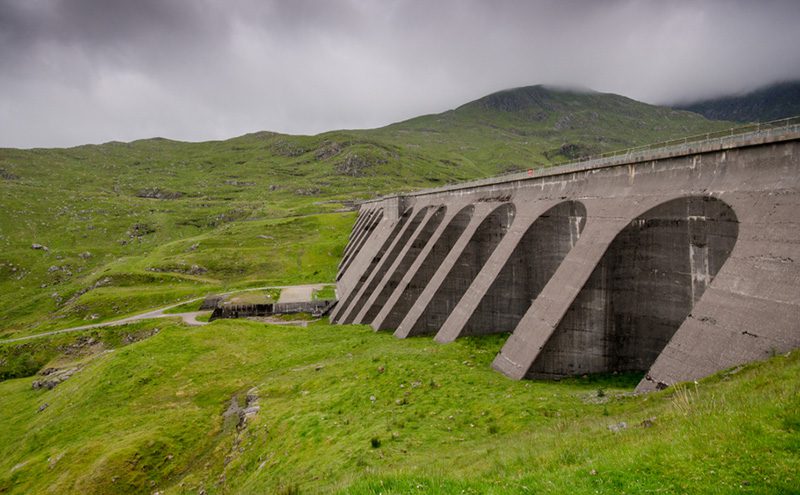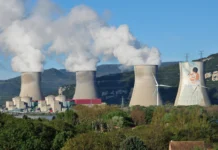
A technology in which Scotland is well-placed to create massive carbon savings and cut energy bills has been highlighted in a discussion paper produced by the Centre for Energy Policy at Strathclyde University and launched on 4 December at an all-party meeting in the House of Lords.
Pumped storage hydro is described as “the most prevalent storage technology operating globally and in Great Britain” offering “the long-term availability to store energy in times of high supply and to release it in times of high demand”. As reliance on renewable energy grows, the need for storage to ensure security of supply is becoming an increasingly urgent priority.
There are several projects currently under development in Scotland but advocates of the technology believe that government policy design support – though not subsidy – is necessary in order to give it a level playing-field alongside other solutions to the intermittency challenge from renewables including battery storage and interconnectors.
The Strathclyde paper notes that the technology has been around for more than 100 years and “is considered the most mature form of electricity storage” which benefits from “its economies of scale and large-scale generation capabilities”. Remarkably, Pump Storage Hydro accounts for 98 per cent of energy storage capacity actually deployed around the world.
Attracting investment
The Strathclyde University paper maintains that to develop projects at the scale required the UK government must produce “policy security” in order to attract the required investment. The future electricity market framework should be designed to attract the large up-front capital investment that is needed for large scale electricity storage, allowing a level playing field with other competing
technologies. Effective competition between all types of storage will deliver the greatest value to consumers.
Professor Karen Turner, director of the Centre for Energy Policy, said: “Our work focused particularly on Pump Storage Hydro as a mature technology, but our conclusions are relevant across the wider portfolio of potential Electrical Energy Storage (EES) options.
“We draw three main conclusions from our research. First, that there is a need to account for and articulate the value of EES. Second, a market framework that recognises this value is needed. Third, development through both of these stages requires greater policy certainty and clarity round low carbon economic development pathways in general, and the outcomes that may be served by EES in particular.”
Speaking also at the launch former UK Energy Minister Brian Wilson said: “As a long-term advocate of hydro-electricity, I welcome this paper which gives PSH a long overdue place in the debate about how to address the critical issue of intermittency. This is already extremely urgent due to the pressure to increase generation from renewables.
“There is no one silver bullet but PSH certainly has a significant part to play. The fact that Scotland’s terrain can offer excellent sites for these developments, with minimal negative impacts, means that this is a technology which can bring massive economic as well as environmental benefits”
Pump Storage Hydro, installed at the correct amounts, could both generate energy quickly in order to meet demand during peak times and use surplus renewable energy during low demand periods to pump water back up and “refill its battery” ready for the next period of high demand.
Savings it could unleash
In 2016, Carbon Trust/Imperial College produced analysis on the benefits of storage to the UK power system. This analysis was subsequently used by the National Infrastructure Commission in their 2016 ‘Smart Power’ report and concluded the following;
· The Carbon Trust/Imperial report concluded that base savings of up to £2.4 billion per annum
could be realised by installing around 6GW of additional storage capacity by 2030.
· The report estimated that consumers would save around £50 per year if the 6GW was built, based on them only receiving 50% of the available savings.
· This £2.4bn saving is only due to the reduction of investment in gas plant
and the use of gas. It does not include saving from reducing investment in networks, or from other savings.
· The report identified that an additional £5 billion per annum could be saved by better optimisation of the power system, making a total of some £7.4 billion pa. These are partly attributable to the availability of storage to help manage the power system, reducing the need for generation and network investment.
So just 6GW of Energy storage could give a potential saving for the consumer of up to £150 per annum offsetting the increases in energy bills relating to renewable energy subsidies.
At present there is 4GW of new Pump Storage Hydro facilities in the pipeline in the UK. Last week a report from the Institution of Engineers in Scotland (IESIS) claimed that a massive gap in the electricity system caused by the closure of coal-fired power stations and growth of unpredictable renewable generation has created the real prospect of complete power failure which could lead to sustained black-outs and power outages and that longer periods with no power could lead to “deaths, severe societal and industrial disruption, civil disturbance and loss of production”.
The IESIS report also warned that the loss of carbon heavy power generating stations means that having to restore electricity in a “black start” situation – following a complete loss of power – would take several days.
Pump Storage Hydro could ease any black start issues if used should such a situation arise. In addition, the technology is proven and is already in use in the UK and in many installations throughout the world.







